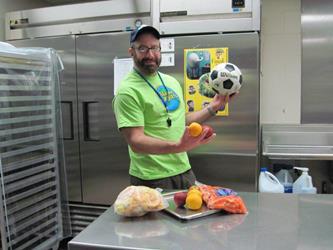Play Every Day Update: Seward school makes PE a daily priority
Alaska Department of Health sent this bulletin at 10/22/2014 04:03 PM AKDTSeward school makes PE a daily priority
Play Every Day blog, http://dhss.alaska.gov/dph/PlayEveryDay/Pages/default.aspx
If you’re a third grader at Seward Elementary, you will have physical education class on Monday.
You’ll have it on Tuesday, too. And again Wednesday, Thursday and Friday.
In fact, by the end of the week, all students in grades 3 to 5 at Seward’s only elementary school will have 30 minutes of PE, five days a week, meeting the recommended 150 weekly minutes of PE for elementary-age children. When you add in the morning and lunch recess time, Seward’s children are getting the recommended 60 minutes of daily physical activity for good health – all before they leave school at the end of the day.
That makes Seward a standout school for the amount of PE and activity children get every day. Seward Elementary has only one PE teacher for the whole school – Mark Fraad. So how does one teacher provide PE instruction to hundreds of kids every day of the week? Fraad explained how the whole school worked together during the 2005-06 school year to make PE a priority.
Back then, Seward Elementary offered only two or three PE classes a week, each 30 minutes long, for students in all grades. That is still the case for grades K-2, but the staff wanted to offer daily PE to grades 3-5.
Fraad said the teachers and Principal David Kingsland – who remains the principal today –looked at research showing that children do better academically when they are active in structured (PE classes) and unstructured (recess) ways and that their behavior improves, too.
Photo features PE teacher Mark Fraad of Seward Elementary juggling with work and play.
Play Every Day is a campaign with the Alaska Department of Health and Social Services to increase awareness about childhood obesity in Alaska, give tips for raising healthy kids in Alaska, and encourage children and their families to be physically active for good health. For more information, visit www.playeveryday.alaska.gov.


